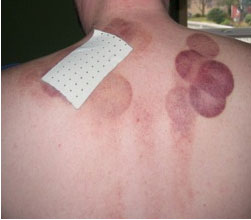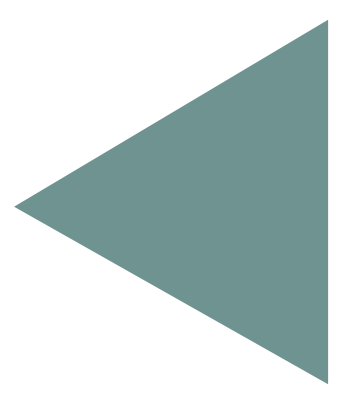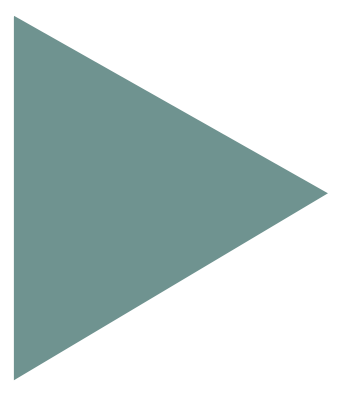A 6-year-old girl, being evaluated for a well child appointment, is noted to have these marks on her back. She was born in Africa and her family now lives locally after emigrating as refugees. These lesions are non-painful and the family indicates that she developed them while being treated for an illness as an infant.

Photo courtesy of Terri Morse, FNP, Upstate Golisano Children’s Hospital
Accessible Version
A photo of a back with 8 hyperpigmented oval areas that are in a regular pattern along the spine and on either side, each larger than the size of a thumb.
What is the most likely cause of these healed scars?
◯
A. Cigarette burns
◯
B. Cupping
◯
C. Moxibustion
◯
D. Coining
What is the most likely cause of these healed scars?
◯
A. Cigarette burns
◯
B. Cupping
✓
C. Moxibustion
◯
D. Coining
The best answer is C
When traumatic conditions leave scars that follow a pattern, it is a good rule of thumb to assume that the injuries were inflicted. In some cases, however, being inflicted does not necessarily mean that there was intent to do harm. Some forms of cultural practices and non-traditional medicine can leave cutaneous signs that may be mistaken for child abuse. Many folk remedies, including moxibustion, cupping and coining (skin scraping), have been reported to be mistaken for abuse. Moxibustion may be mistaken for burns, particularly cigarette burns. Other forms of therapeutic burning using heat sources other than moxa have been mistaken for intentional burns due to child abuse.
Moxibustion is part of a spectrum of therapies that may be offered as complementary alternative medicine treatments. It is a traditional Chinese medical procedure to treat pain, behavioral concerns, asthma, low blood pressure, enuresis and other symptoms. The method is also used by other cultures, especially those of Asian origin, including refugees in the United States. With moxibustion small pieces of the moxa herb, Crossostephium artemisioides, are burned on or above acupuncture points. The heat from the burning moxa is believed to stimulate acupuncture points, thereby increasing local blood circulation. A medium is sometimes used to separate the burning moxa from the skin. If it is not, second-degree burns, as shown above (healed), may occur.
Since moxibustion can leave permanent scarring, this cultural practice may not be considered acceptable to cultures that do not consider the treatment beneficial. However, for those who utilize this method, the unintended harmful outcome (scar) is a small risk compared to the intended outcome of relief of symptoms. Compared to cupping or coining (see below), moxibustion is the most likely to leave a permanent cutaneous finding. However, other than the cosmetic effect, there is no known long-term functional harm. As long as there is no functional harm, the spectrum of harm should be considered on a case-by-case basis and include the value placed on the treatment by the culture of origin and the beliefs of the parents.
Cupping is another cultural medicine practice that is used in Asia, the Middle East and parts of Europe to treat pain, fever and other symptoms. Treatment remedies for various conditions (cupping versus moxibustion, for example) vary based on practitioner. The patient in the photo below received cupping for successful alleviation of his shoulder pain. A heated glass or bamboo cup is held against the skin (either the painful area or an acupuncture site) until the trapped air cools and contracts. This forms a vacuum and the cup is left in place. Petechiae may develop in the shape of the cup. Dry cupping does not draw blood. The lesions are non-painful and temporary.

Photo courtesy of Terri Morse, FNP, Upstate Golisano Children’s Hospital
Coining is also called coin rubbing, cheut sah (Chinese) and cao gio (Vietnamese). This procedure involves rubbing the edge of a coin against the skin until petechial bruising appears. Warm oil may be used to coat the skin or a balm may be used on the edge of the coin. These lesions may be seen as symmetrical purpuric stripes on large areas of the chest and/or back. They are temporary and cause minimal to moderate discomfort.
- Hansen KK. Folk remedies and child abuse: a review with emphasis on caida de mollera and its relationship to shaken baby syndrome.. Child Abuse & Neglect. 1998; 22 (2) : 117-27.OBJECTIVE: There were two objectives: first, to make the reader familiar with folk remedies that might be confused with child abuse; second, to challenge the idea existing in the literature that treatment for the Hispanic folk illness caida de mollera can cause the injuries seen in the shaken baby syndrome. METHOD: Literature review and analysis with case application were used. RESULTS: A wide variety of folk remedies with potential for confusion with child abuse were found to exist, and were described. Treatment for caida de mollera was found to consist of a number of gentle, nonviolent maneuvers quite different from the violent shaking believed to cause shaken baby syndrome. CONCLUSIONS: Familiarity with folk remedies will help differentiate them from child abuse. The child protection community would benefit from realizing that treatment for caida de mollera is an improbable cause of shaken baby syndrome injuries.
- Kim JI, Lee MS, Lee DH, Boddy K, Ernst E. Cupping for treating pain: a systematic review.. Evidence-Based Complementary and Alternative Medicine : eCAM. 2011; 2011 : 467014.The objective of this study was to assess the evidence for or against the effectiveness of cupping as a treatment option for pain. Fourteen databases were searched. Randomized clinical trials (RCTs) testing cupping in patients with pain of any origin were considered. Trials using cupping with or without drawing blood were included, while trials comparing cupping with other treatments of unproven efficacy were excluded. Trials with cupping as concomitant treatment together with other treatments of unproven efficacy were excluded. Trials were also excluded if pain was not a central symptom of the condition. The selection of studies, data extraction and validation were performed independently by three reviewers. Seven RCTs met all the inclusion criteria. Two RCTs suggested significant pain reduction for cupping in low back pain compared with usual care (P < .01) and analgesia (P < .001). Another two RCTs also showed positive effects of cupping in cancer pain (P < .05) and trigeminal neuralgia (P < .01) compared with anticancer drugs and analgesics, respectively. Two RCTs reported favorable effects of cupping on pain in brachialgia compared with usual care (P = .03) or heat pad (P < .001). The other RCT failed to show superior effects of cupping on pain in herpes zoster compared with anti-viral medication (P = .065). Currently there are few RCTs testing the effectiveness of cupping in the management of pain. Most of the existing trials are of poor quality. Therefore, more rigorous studies are required before the effectiveness of cupping for the treatment of pain can be determined.
- Lee MS, Choi TY, Kang JW, Lee BJ, Ernst E. Moxibustion for treating pain: a systematic review.. The American Journal of Chinese Medicine. 2010; 38 (5) : 829-38.The objective of this study was to assess the evidence for or against the effectiveness of moxibustion as a treatment option for pain. Fourteen electronic databases were searched. Randomized clinical trials (RCTs) testing moxibustion in human patients with pain of any type were considered. Trials using direct or indirect moxibustion were included. Studies comparing moxibustion with other treatments of unproven effectiveness, studies testing moxibustion together with other treatments of unproven efficacy and trials where pain was not a central symptom of the condition were all excluded. The selection of studies, data extraction, and validation were performed independently by two reviewers. Four RCTs met all the inclusion criteria. Others were of poor methodological quality. Two RCTs suggested significant pain reductions for indirect moxibustion in osteoarthritis as compared with drug therapy (n = 200, RR, 1.11; 95% CI of 1.02 to 1.21, p = 0.02, heterogeneity: chi2 = 1.03, p = 0.31, I2 = 3%). The other two RCTs suggested positive effects of indirect or direct moxibustion on pain in scleroma or herpes zoster compared to drug therapy, respectively. We conclude that few RCTs are available that test the effectiveness of moxibustion in the management of pain, and most of the existing trials have a high risk of bias. Therefore, more rigorous studies are required before the effectiveness of moxibustion for the treatment of pain can be determined.
- Look KM, Look RM. Skin scraping, cupping, and moxibustion that may mimic physical abuse.. Journal of Forensic Sciences. 1997; 42 (1) : 103-5.Physical abuse and child abuse can manifest themselves as many different appearances. However, there are some cultural practices of Oriental medicine that may mimic physical and/or child abuse. This paper will discuss the practice of skin scraping, cupping, and moxibustion, which has been misdiagnosed as physical/child abuse by unfamiliar examiners.
- MacReady N. AAP retracts statement on controversial procedure.. Lancet (London, England). 2010; 376 (9734) : 15.The American Academy of Pediatrics has been put on the defensive after its latest report on female genital cutting provoked a furious reaction. Norra MacReady reports.
- Rosenblat H, Hong P. Coin rolling misdiagnosed as child abuse.. CMAJ : Canadian Medical Association Journal = Journal de l'Association Medicale Canadienne. 1989; 140 (4) : 417.Coin rolling is a traditional oriental treatment used to relieve fever, headach and chills. It is known as Cheut Sah to the Chinese and Cao Gio to the Vietnamese. The procedure involves rubbing the edge of a coin against the skin until a purpuric or petachial rash appears. The Vietnamese apply hot oil and massage the skin until it is warm before the coin is used; the Chinese coat the coin with tiger balm, which is a nonprescription topical ointment applied for muscular aches. Parents usually perform the procedure without medical supervision.



